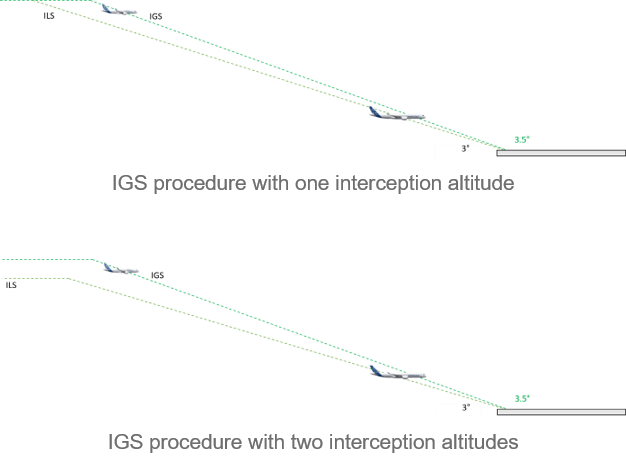STEEPER DESCENTS REDUCE NOISE FOOTPRINT
Implementation of satellite-based augmentation systems (SBAS) and ground-based augmentation systems (GBAS) enable airspace users to follow more flexible flight paths. Introducing more flexible arrival routes can reduce the amount of noise at ground level near the final approach segment, as well as fuel burn and CO2 emissions. The solution can also improve time efficiency in off-peak periods where ISGS enables an optimisation of the arrival flight profile for the aircraft types that can use it, which leads to a reduction in their arrival flying time.
The ISGS solution introduces a new concept of operations aiming at increasing the glide slope so that aircraft can use augmented satellite signals to fly steeper approach paths. The enhanced arrival procedure (EAP) reduces environmental impact by the use of two glide slopes active simultaneously, where aircraft flying on the higher slope generate less noise.
The procedure features a glide slope between the published one (commonly 3°) and 4.49° (limit above which the steep approach concept applies), and provide a significant reduction in ground noise level to an order of magnitude of 3 dBA in approach between 15 NM and 4 NM from the runway threshold.
This Solution was formerly part of PJ.02-02-W1.
BENEFITS
Reduced environmental impact

Datapack
